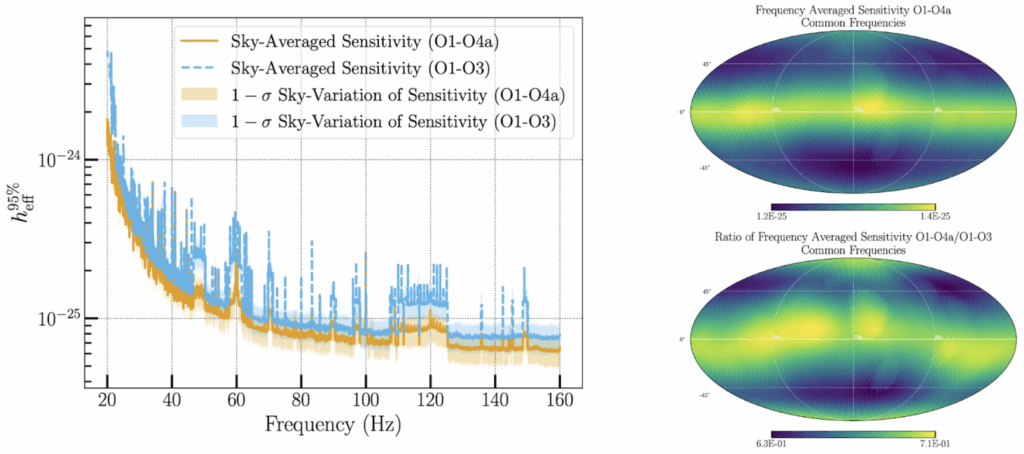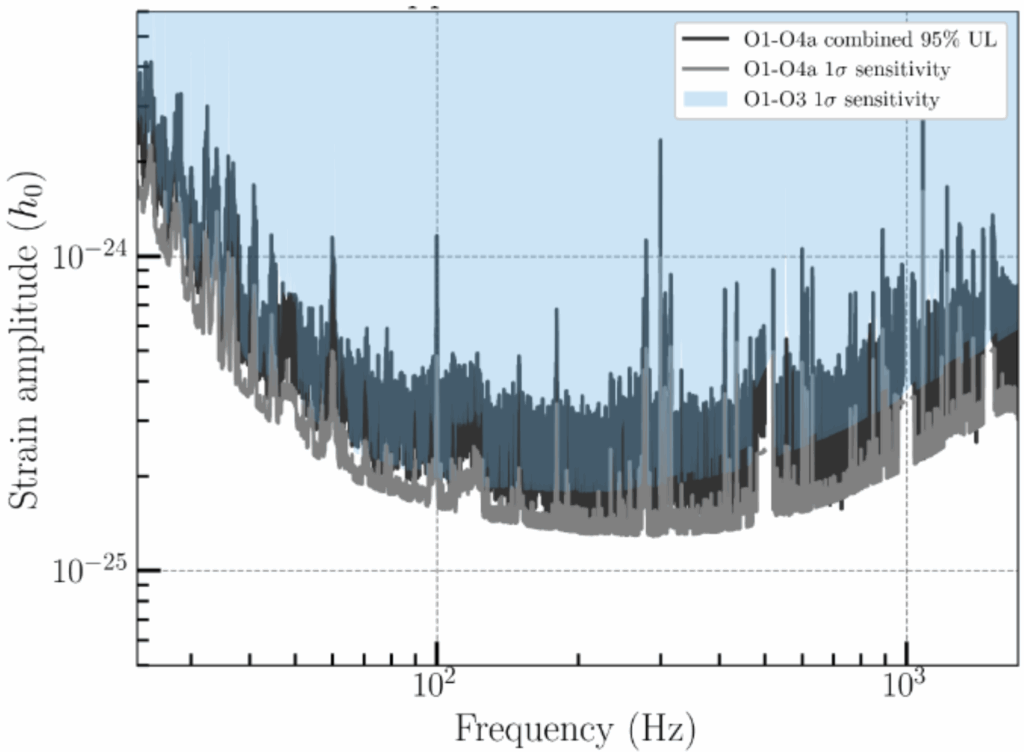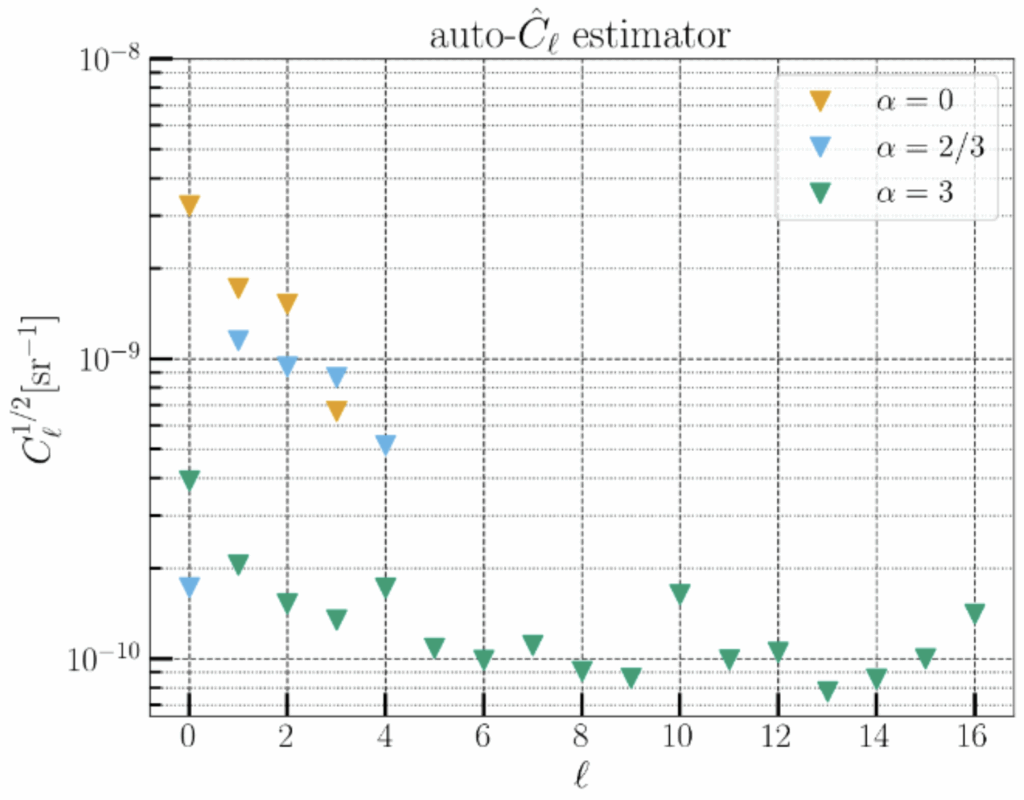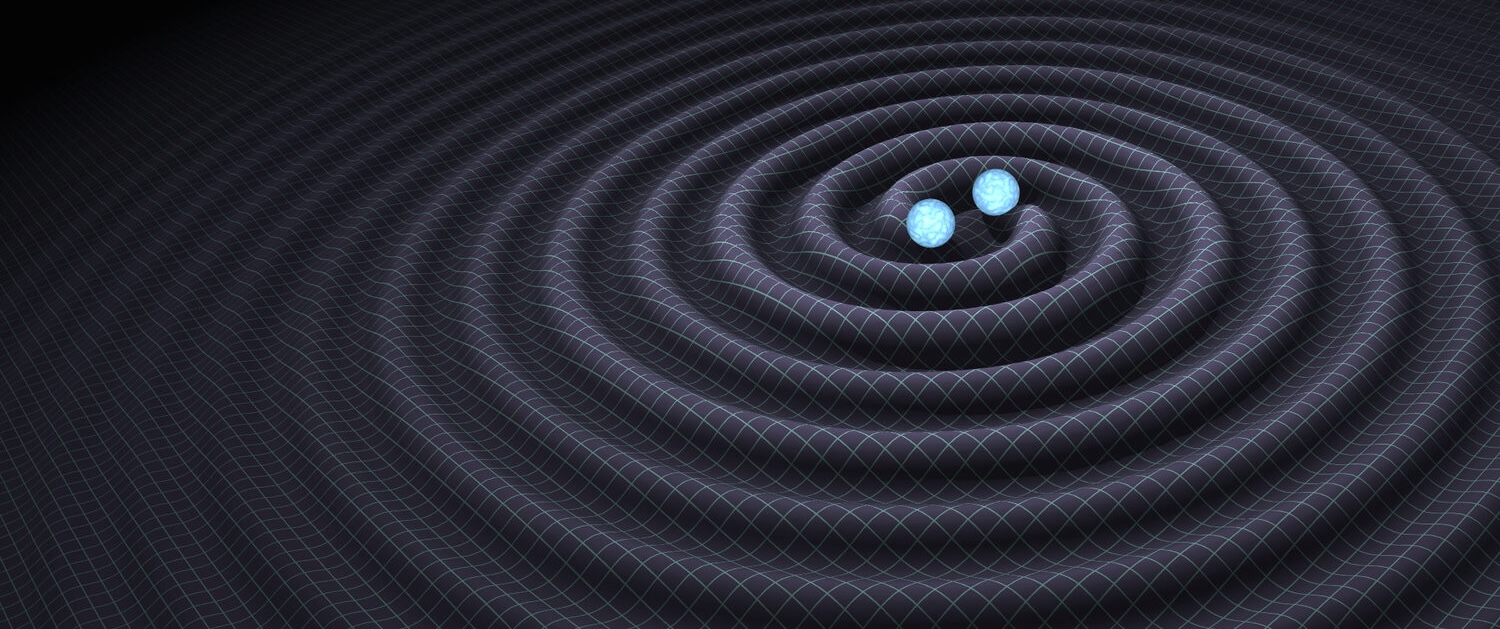Using data from LIGO, Virgo, and KAGRA’s first four observing runs (through the first portion of the fourth observing run, known as O4a), we searched for persistent gravitational waves across the sky — both from specific known sources and from a possible background of unresolved signals. We did not detect any signals, but we set the most stringent limits to date on the strength of such waves, improving previous results by up to about a factor of two.
Why search for persistent gravitational waves?
Gravitational waves are ripples in spacetime, often produced by massive, fast-moving cosmic objects. While we have detected short bursts of waves from colliding black holes and neutron stars, there may also be long-lasting (“persistent”) gravitational-wave signals. These could come from spinning neutron stars, dense clusters of stars, or even from processes in the early universe. If many of these signals overlap, they will form a diffuse gravitational-wave background. Importantly, this background is unlikely to be uniform — its strength can vary across the sky depending on where sources are located.
By searching for these persistent and directional signals, we aim to open a new window into the local and distant universe, revealing populations of neutron stars, galaxy clusters, or even unexplored phenomena in the early Universe like cosmic strings or inflation.

Figure 1: Left panel – Sky-averaged upper limits (UL) given by the all-sky all-frequency search using the O1 – O4a and O1 – O3 datasets, respectively. The shaded regions represent the noise level in the upper limits across the sky. Top Right Panel – Sky map of frequency-averaged upper limits using O1–O4a data. The observed pattern reflects the typical sky sensitivity of an HL-dominated network. Bottom Right Panel – Sky map showing the ratio of frequency-averaged upper limits from O1-O4a to those from O1-O3.
How did we conduct the search?
We used LIGO data from Observing Runs O1 to O4a, as well as Virgo data from the third Observing Run, to look for persistent signals. We employed a gravitational-wave radiometer — a technique that cross-correlates data between detectors to map out possible gravitational-wave power across the sky.
Our search included four complementary analyses:
- All-sky all-frequency search: scanning for continuous signals across the full sky and frequency range.
- Narrowband targeted search: focusing on specific astrophysical locations, like Scorpius X-1 and the Galactic Center.
- Broadband search: looking for wide-frequency gravitational-wave backgrounds from point-like sources.
- Extended-source search: using spherical harmonics to probe broad, diffuse sources.

Figure 2: “Upper limits of the narrowband radiometer search, using O1 – O4a datasets for a globular cluster Terzan 5, a new target that is explored in this work. The black solid line shows the Bayesian upper limits, while the gray line shows an estimation of the sensitivity under the hypothesis of no signal being present.
What did we find?
We did not find evidence of persistent gravitational waves in any of the analyses. However, we placed the tightest upper limits ever on these types of signals.
- All-sky search (see Figure 1): Sensitivity estimates between 3×10−26 and 8.4×10−24.
- Targeted search (see Figure 2): For key sources like Scorpius X-1 and SN 1987A, strain amplitudes were constrained between ∼1.1×10−25 and 6.5×10−24.
- Broadband search: Energy flux limits improved by factors of 1.4–1.7 over previous results.
- Extended-source search (see Figure 3): Constraints on the gravitational-wave angular power spectrum were also tightened by up to a factor of two.
These results are built upon searches for new, persistent gravitational-wave sources, as well as improved analysis techniques, and set the stage for future discoveries.

Figure 3: 95% confidence upper limits on the angular power spectrum for the extended-source search using the O1 – O4a datasets. The different colors represent three power-law spectral models, each of which has differing maximum angular scales we explored.
Looking ahead
As LIGO, Virgo, and KAGRA continue observing with improved sensitivity, we expect to increase our chances of detecting persistent gravitational waves. In future analyses, we will include more data to analyze and refine our constraints even further on this persistent background of gravitational waves.
Find out more:
Back to the overview of science summaries.

